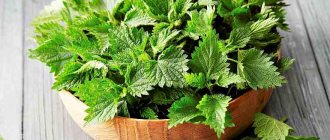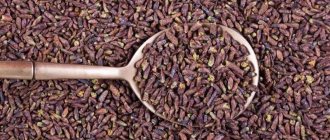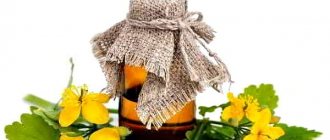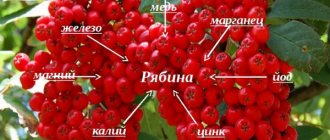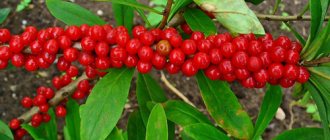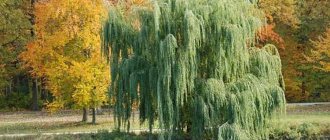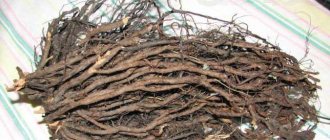Useful Features
The benefits of white lily are evidenced by the presence of starch, phytosterols, linalol, and kaempferol in its composition. Essential oils, saponites, and terpineol were identified. Contains tannins, pyrrole alkaloids, polysaccharides, carotenoids. Medicinal properties:
- anti-inflammatory;
- hemostatic;
- tonic;
- wound healing;
- painkillers;
- expectorants;
- brightening.
A tincture of the plant helps with insomnia, cough, tonsillitis, and joint diseases. Helps treat otitis media, stomatitis, atherosclerosis, and pulmonary diseases. Used for chronic fatigue syndrome, tachycardia, and nervous disorders.
The product is successfully used to treat nail fungus, open wounds, and burns. Helps eliminate acne and calluses, accelerates the treatment of abscesses and boils. It has a beneficial effect on the skin, rejuvenating it and lightening severe pigmentation. Used in the treatment of rosacea.
LiveInternetLiveInternet
White lily - beneficial properties Since the first days of Christianity, the white lily (Lilium candidum) has been associated with the Madonna, which is probably why the alternative name of the plant sounds like “Madonna lily”. Another interesting name is “honey lily”. Belongs to the lily family and is found throughout the Mediterranean and Western Asia. Historians believe that the first to cultivate the white lily were in Persia and Syria. Luxurious white lily flowers have powerful healing properties.
Its large inflorescences contain substances with antimicrobial properties. Folk remedies based on them are effective for colds, bronchitis, lung diseases, sore throat, some skin problems, etc.
Chemical composition of white lily White lily flowers are rich in valuable essential oils (0.3%). There is vanillin (up to 2.5%), p-hydroxy-m-methoxytoluene (up to 50%), p-cresol, linalol, terpineol, phenylethyl alcohol and its esters. Acetic, palmitic, benzoic, cinnamic and propionic acids are present. The petals contain flavonoids (kaempferol and its derivatives), lilaline, jatrophin and carotenoids. White lily bulbs contain starch (14%), soluble polysaccharides (glucomannan), phytosterols, pyrrole alkaloids, amino acids (methylene glutamic acid) and tannins. In addition, new saponins of the spirostanol and furostanol type were found in the bulbs.
What are the benefits of white lily? Infusions and other remedies with white lily are useful as an expectorant for respiratory diseases. The plant relieves pain and calms the nervous system, minimizes the effects of severe stress.
The substances contained in lily petals can help in the fight against heart disease. The bulbs have a diuretic effect.
The range of uses of the plant is unusually wide:
abscesses, sunburns and other burns, calluses, boils, open wounds; pimples and pustules on the skin; bad dreams, insomnia, chronic fatigue syndrome; eye diseases; rapid heartbeat and atherosclerosis; memory loss; otitis and ear inflammation; fungal infections of the nail plates; sore throat, dry cough; inflammation of the upper respiratory tract, respiratory diseases; mouth ulcers (stomatitis).
Cosmetic properties of white lily The extract obtained from the petals is used in cosmetics to treat rosacea. Polysaccharides and saponins in this plant are responsible for moisturizing and softening properties - an excellent option for dry, irritable and sensitive skin. Soluble polysaccharides retain moisture well and increase elasticity. Creams and other cosmetics with white lily perfectly whiten the skin, inhibit the production of melanin, protect against ultraviolet rays, and are effective in combating freckles and other types of skin pigmentation. White lily extract contains glycolic acid, a biologically active chemical peeling ingredient that easily removes dead skin particles and promotes its regeneration. White lily essential oil has found wide use in modern perfumery.
Traditional medicine recipes with white lily
For stomatitis, the petals are boiled in sweet milk, then a teaspoon of the prepared warm drink is kept in the mouth for as long as possible. Tea made from white petals is used to cleanse the blood. Adding other medicinal herbs to this tea will help with leucorrhoea: peony root, white trefoil (oxalis) and white nettle (deaf nettle).
In addition to the petals, beneficial properties are attributed to the decoction of the white lily bulb.
Helps with swelling, infected ulcers. A compress soaked in a decoction is used to treat coughs.
For eye pain or other eye diseases, 2 tsp. The petals are placed in a cup of cold water in the evening, the infusion is filtered in the morning, and the eyes are wiped with it using a cotton swab. The medicine should be at room temperature. To treat otitis, warm white lily tea or alcohol tincture is instilled into each ear, covered with a cotton cloth.
Honey tincture with white lily
A healing potion is prepared from 40 large fresh lily flowers. They are passed through a meat grinder, a kilogram of natural liquid honey is added and mixed well. The resulting pulp is stored in a glass container, tightly closed with a lid. When symptoms of the disease occur, the medicine is absorbed by placing it under the tongue. Take 0.5 tsp per dose. mixtures.
Oil infusion with white lily
Instead of honey, you can use vegetable oil. The oil is pre-boiled (preferably in a water bath) for 40-45 minutes, then cooled. Pour crushed flowers into a dark glass jar (the container should be one third full). Pour the prepared oil on top. Leave in the dark (or in the refrigerator) for 3 weeks. The finished oil tincture is filtered. The cake that has settled to the bottom can be refilled with oil and the whole procedure can be repeated. Healing oil tincture from lily flowers can be stored for several years. In the cold, the beneficial properties of the components are preserved.
Take according to a certain schedule. For lung diseases - three times a day. The initial dose is only 1 tsp, after a few days it is increased, gradually bringing it to 1 tbsp. l. appointment. For external use, an oil infusion (without boiling) can be prepared using white lily root. In this case, for 50 g of chopped onion you need to take ½ liter of oil. This remedy is infused for at least 6 weeks.
Wound healing agent
In folk medicine, the petals and stems of white lily are used as an effective wound healing agent; it helps well in the treatment of burns. An oil infusion is prepared from three lily stems (with flowers). They are crushed and placed in a half-liter jar. Fill to the top with oil. Leave for 14 days. The strained infusion is used to lubricate wounds and is used as a lotion for burns and boils.
Alcohol tincture of white lily
Alcohol tincture works much better than other recipes with white lily. It will be good for both external use (for pustular skin lesions) and for internal use (for example, for insomnia). Lily petals are crushed and poured into a dark glass bottle, filling it by a third. A couple of whole flowers are placed on top and filled with vodka. You can also use triple cologne. Regular shaking of the bottle is recommended. The tincture is taken orally after 15-30 days, a teaspoon 2-3 times a day. For better tolerance, it can be diluted with water. For stomatitis, the petals are boiled in sweet milk, then a teaspoon of the prepared warm drink is kept in the mouth for as long as possible. White lily is not only a beautiful flower with a stunning aroma, but also an excellent medicine that relieves many diseases and dermatological problems.
Source
Oil infused with lily flowers.
Sterilize the vegetable oil for 4 minutes in a water bath, cool and pour into a dark bottle, after filling it one third with crushed white lily flowers. Close and infuse the medicinal oil for 3 weeks in a cool, dark place. Then strain, pour into a clean container, and pour the remaining mixture with oil again and let it brew again. Store the oil infusion in the refrigerator, as at low temperatures it will retain its medicinal properties longer (the mixture can be stored for 2 years).
Take the oil infusion for lung diseases, a teaspoon at a time, gradually increasing the dose to a tablespoon. Take the medicine 30 minutes before meals three times a day.
Lily infusion.
Burns and wounds are treated with lily infusion. Chop 3 stems along with flowers, place in a 0.5 liter jar, fill with vegetable oil to the top and let brew for 2 weeks. Store the infusion in the refrigerator without removing the lily flowers from it.
Alcohol tincture of lily.
Will relieve pustular and other wounds, acne. Fill a dark glass bottle 1/3 full with crushed white lily petals, add three whole flowers, fill to the top with vodka, close tightly and place in the refrigerator. After a month, the tincture can be used for medicinal purposes.
Source
Healing ointment from lily.
When the white lily blooms, pick the flowers along with the stamens, fill a jar with them and fill them with vegetable oil (do not observe any proportions). Place in a sunny place. When you need to take it for treatment, take a little ointment from the jar, and then put it back in the sun. I kept the medicine in a sunny place for about two months.
More information about using ointment
Preparations based on lily
Herbal pharmacies offer white lily oil. You can purchase a 30 liter bottle for 190 rubles. Indications for external use include frostbite, boils, diaper rash, acne, colloidal scars, burns, scars. Recommended for restoring the elasticity of sagging skin and eliminating wrinkles.
On the Internet you can purchase an alcohol tincture made from the petals of a white lily. The average price for 250 ml is 250-320 rubles.
Recommended for rubbing sore joints and eliminating acne. Helps with sore throat as a gargle every six hours. For the procedure 1 tsp. dissolve in 200 ml of heated water.
Lily saranka in oriental medicine
Saranka lily (Lilium pilosiusculum (Freyn) Miscz. hairy lily, pubescent lily, slightly hairy lily, saranka, royal curls, sardaana
Saranka lily (Lilium pilosiusculum (Freyn) Miscz.) is also used in folk medicine. The bulb is large, up to 5 cm in diameter, golden yellow, the scales on the top are free, numerous. The stem is 50-120 cm tall, rough with short hairs. Leaves are 6-10 cm long, 0.7-1.5 cm wide, pointed, narrowed towards the base, with cartilaginous teeth at the edges. The bracts are lanceolate, cobwebby-fluffy. The flowers are solitary or up to 10. The tepals have ragged pubescence on the outside, a nectar-bearing slit with small papillae along the edge. The anthers are reddish-violet. The capsule is obovate, with sharp ribs.
Special features: from the closely related European species Lilium martagon L. (Royal curl lily) Lilium pilosiusculum (Freyn) Miscz. (Saranka lily) is distinguished by lanceolate (not obovate) leaves, lanceolate (not linear) bracts, which, like the tepals, are heavily pubescent.
The bulbs, stems, leaves and flowers of these lilies were used as medicinal raw materials. External wounds and stomach ulcers were healed with saran juice.
Chopped and boiled onions with flour were used to open abscesses.
Properties of lily saranka oil: the substances have anti-inflammatory, soothing, analgesic and hemostatic properties for gynecological diseases.
Lily bulbs are widely used for inflammation of the rectum and bladder, and are an effective antihemorrhoidal remedy.
A decoction of flowers is drunk for diseases of the gallbladder.
In modern oriental medicine, an alcohol tincture prepared from the stem, leaves and flowers of a fresh plant, cut during flowering, is used for inflammation of the ovaries, sexual arousal with cardiac disorders.
Lily bulbs are used for functional disorders of the heart and weakened vision. Flowers cleanse the kidneys and cure their diseases.
In modern oriental medicine, an infusion of lily bulbs is used as an analgesic and hemostatic agent; it restores vigor to patients and improves appetite. They also drink the infusion for toothache and nervous shock.
A decoction of lily bulbs in boiling milk was used to make lotions for skin inflammation and boils, as well as for cosmetic purposes.
Lily leaves are applied to burns to relieve inflammation.
Economic purpose: for the indigenous peoples of Siberia, saranka was a common food product; in the fall, they carried out a massive collection of bulbs, which were stored in dried form. In Rus', saranka was dug on Yegoryev spring day. Sarans can be eaten raw, but more often they were boiled in milk or baked in ash. Often the sweet and mealy-tasting saran root replaced bread. Five to six lily bulbs are enough to satiate an adult.
Meat and fish seasoned with saran bulbs are easier to digest. An excellent dietary dish for ulcer sufferers is saran stewed in the liquid formed after cooking clarified butter. The same dish was given to children with a severe debilitating cough.
In Transbaikal cuisine, saran bulbs were added to cottage cheese with bird cherry flour.
This lily is still popular in Kalmykia and Kyrgyzstan. There, its bulbs serve as a seasoning for sheep's cheese, to which they impart not only a subtle aroma, but also an excellent taste.
During the war, saran bulbs were dried, crushed, and the resulting flour was used to bake bread or cook porridge.
All lilies are beautiful ornamental plants.
Recipes for making tinctures
Lily tincture, which is quite widely used in traditional treatment, can be prepared independently at home.
Article for you:
Chamomile infusion: what it helps with, what diseases it treats, how to prepare and take
On alcohol
To make a remedy that helps with cancer, white lily bulbs are taken. They need to be washed, wiped with a linen napkin and chopped. Take two glasses of prepared raw materials and place them in a three-liter jar.
Add alcohol (96%), which should completely fill the vessel. Keep it hermetically sealed without lighting for 14 days.
Drink 30 ml of extract filtered through two layers of gauze two hours before breakfast, lunch, dinner, after eating 1 tbsp of butter. l. and drinking a chicken egg. To complete the entire healing course, you will need three three-liter jars of tincture.
On vodka
Cut off the blooming lily flowers. Together with the pistils and stamens, they are placed in a glass vessel, tamping the layers. Fill, leaving free space at the top of about 1/4 of the total volume. Pour vodka 3 cm above the raw material.
Seal the container hermetically. Leave it for a month and a half in a dark closet, remembering to shake it twice a week. The finished healing extract is squeezed through two layers of gauze.
On oil
You will need to dig up the entire white lily plant when all the flowers have bloomed. Wash and grind each part separately. Combine foliage with flowers - 2 cups each, adding small fragments of the onion - 1 cup.
Place the mixture in a sterile glass jar and completely fill it with sunflower oil. Actively stir the contents of the container. Then close it tightly and put it in a sunny place. Keep for three weeks with daily shaking. The finished lily oil extract is filtered through cheesecloth.
On the root
Lily root helps with dropsy. For this purpose, take 50 g of washed, finely chopped plant bulbs. Pour them into a bottle with 0.5 liters of vodka.
The sealed container, shaken every three days, is kept in a dark cupboard for four weeks. The tincture, 25 drops each, strained through a double gauze filter, is consumed 15-25 minutes before breakfast, lunch, dinner, washed down with water. After such therapy, immunity is further increased and mood improves.
On flowers (petals)
Petals collected during the period when the flowers fully bloom are placed in a darkened glass bottle. The container must be filled with a loose layer to 3/4 of the volume. Alcohol (96%) is poured in, which should be 4-5 cm above the surface of the raw material.
Article for you:
Recipes for dogwood tinctures, beneficial and medicinal properties, rules of use
The hermetically sealed vessel is kept in cool conditions without light for six weeks. The finished composition is filtered using a fine sieve.
Storage, expiration date
Products made from lily raw materials by infusion in vodka or alcohol should be poured after filtration into a shaded glass container with a tight stopper. They can be stored for two years at temperatures up to 25 degrees.
The oil extract should be kept in the refrigerator in a closed glass jar. Its shelf life is 12 months.
The selection of folk recipes that involve the use of different parts of the white lily must be carried out together with a doctor. His recommendations will allow you to achieve positive dynamics when carrying out therapeutic measures at home.
The use of white lily in folk medicine
There are several proven effective recipes using white lily. The plant is beneficial for minor health problems and serious diseases.
For oncology
White lily tincture is used in cancer therapy. They do it like this:
- a couple of plant bulbs are properly chopped;
- pour the raw material with 500 ml of 96% alcohol;
- keep for two weeks in a dark and cool place;
- passed through gauze.
You need to take the drug 25 ml three times a day on an empty stomach. Immediately before using the tincture, eat a piece of butter, and then drink a raw chicken egg. In total, the course of treatment continues until 8 liters of the drug are consumed.
Attention! The use of white lily must be agreed upon with an oncologist. It is strictly forbidden to use the plant as the only medicine.
For arthritis
The beneficial properties of lilies are used for joint ailments. Usually a strong tincture is used externally. Prepare the product as follows:
- fresh petals are poured halfway into a glass container;
- pour 96% alcohol, it should cover the flowers completely;
- leave for six weeks in a cool, dark place;
- filter through a layer of gauze.
The finished product is used for rubbing sore joints and compresses; before use, the tincture is half diluted with water.
For abscesses and boils
For inflammation of the skin and ulcers, this mixture helps well:
- Boil the white lily bulb and chop it properly;
- combine the gruel with an equal amount of flour;
- bring to homogeneity.
A thick mass is applied to the affected areas of the skin twice a day, in the morning and evening.
For nervous disorders
For depression, increased anxiety and insomnia, this tincture is beneficial:
- the petals of several buds are poured with a glass of vodka;
- put the container in a dark place for 14 days;
- strain the mixture through folded gauze.
You need to take 30 drops of the tincture every morning. If desired, the drug can be diluted in 50 ml of water.
Advice! The tincture can be used to gargle for sore throat; in this case, add about 50 drops of the product to a glass of liquid.
For tuberculosis
The antibacterial properties of white lily are beneficial for tuberculosis. For medicinal purposes, prepare a decoction:
- 10 g of chopped onion is poured into 200 ml of hot water;
- Boil for 15 minutes over low heat;
- keep covered for two hours.
You need to drink 25 ml of the decoction twice a day. In total, treatment with white lily is continued for a month.
White lily decoction has diuretic properties and helps with inflammation of the bladder and kidneys
For uterine bleeding
In the gynecological field, an aqueous infusion of the plant is used. Traditional medicine offers the following recipe:
- the plant bulb, petals and leaves are crushed;
- two large spoons of raw material are poured into 250 ml of hot water;
- wrap the product and keep it closed for 15 minutes;
- filter.
We recommend reading: Sainfoin: description and photo of the plant, medicinal properties, contraindications
You need to take the infusion 60 ml three times a day on an empty stomach. The course of therapy is continued for no more than a month.
For bronchitis
The following mixture has good expectorant properties:
- 15 white lily buds are crushed into pulp;
- mixed with 500 g of honey;
- bring to a homogeneous state.
Take the medicine on an empty stomach three times a day with a large spoon. The product should not be swallowed immediately, but should be dissolved slowly under the tongue. Therapy is continued until the condition improves and the cough is relieved.
Treatment of joints
In order to relieve pain and eliminate inflammation in arthritis, the most effective method is considered to be rubbing the aching areas in the morning and evening with a tincture made from the petals of a white lily.
Such procedures alleviate the condition of radiculitis and osteochondrosis. This remedy can be applied to wounds. It helps relieve toothache. Soak the cotton wool and place it on the disturbing tooth for 15-25 minutes.
Vodka tincture demonstrates good results for joint lesions. It is rubbed twice a day into the sore joints in a circular motion.
To eliminate joint pain, you can use an oil tincture. This product has a gentler effect on the skin, so compresses are often used based on it, which are left overnight. Oil extract helps with cramps.
Areas of application
White lily has not found any use in traditional medicine. But in folk medicine, absolutely the entire plant is used. White lily is widely used in perfumery and cosmetology. Cosmetologists prepare various masks and lotions based on white lily. Perfumers value the essential oils contained in it.
White lily is used by folk healers as a diuretic and analgesic. To treat dropsy, bronchitis and other lung diseases, use a tincture of lily bulbs in alcohol. A similar tincture, but based on flowers, is used as a tonic and for rubbing against rheumatism, gout, and inflammation of the joints.
We invite you to read: Sauerkraut with beets (with and without vinegar): recipes with photos
The same flowers, but boiled in milk, help in the treatment of abscesses, and their decoction in combination with honey and mustard, according to the recipes of traditional healers, helps get rid of freckles. Swelling and inflammation are relieved with compresses from well-chopped plant bulbs. Lily oil helps with burns and wounds. It is also used for cramps and various pains.
For nasal polyps
Polyps, which are benign formations located in the nose, can form at any age, but are more often observed in children.
According to indications, the doctor may recommend including in the general therapeutic complex recipes from the field of alternative medicine, which involve the use of snow-white lily as a raw material.
Vodka tincture provides effective assistance. It must be diluted in equal proportions with slightly warmed boiled water. Soak gauze pads with a healing solution and insert them into the nasal passages for 35-40 minutes. They practice sessions every eight hours for a month.
For burns
To speed up the healing of burns, use three stems of a snow-white lily, cut along with the flowers. The raw materials, washed and dried on a linen napkin, must be crushed and transferred to a half-liter sterile jar. Pour in vegetable oil up to the neck. When closed, the vessel is kept in the sun for 14 days. Store the jar of oil extract in the refrigerator without straining.
Article for you:
Kalanchoe tincture: how to prepare and take for treatment
To treat a burn, moisten a soft cotton cloth with lily oil and apply it to the affected area of the skin. It is necessary to stand for about 45-50 minutes. Such sessions are practiced twice a day.
For skin care
Based on the snow-white lily, you can independently make products that help improve the condition of the skin.
- For wrinkles
Young lily leaves and flowers are combined - 75 grams each. Transfer to a jar and first pour in 500 ml olive oil using a water bath.
The closed container is left on a sunny windowsill. The infusion is continued for a month, shaking the contents every three days. When used daily, this oil quickly restores elasticity to the skin and significantly reduces wrinkles.
- For acne
In order to cleanse the skin of acne, it is recommended to use a homemade tincture made with vodka using fully bloomed lily flowers.
To perform cleansing procedures, soak cotton pads in the extract and gently wipe problem areas. To avoid irritation on hypersensitive skin, spot treatment is practiced with cotton swabs for each individual formation. Procedures should be carried out twice a day.
Description and parts used
Parts used: leaves, flowers, bulbs.
Collection time to preserve the medicinal properties of lilies: leaves and flowers - June-July, bulbs - April or September-October.
Plant description: Liliaceae family.
When starting to study the properties of white lily, it is worth learning that it is a perennial, herbaceous bulbous plant. The bulb is up to 5 cm long, ovoid, consisting of fleshy scales.
The stem is erect, leafy, green or brown, and is a continuation of the bottom of the bulb. Plant height up to 150 cm. Leaves linear-lanceolate, alternate, glabrous, sessile. The lower leaves are collected in whorls, the upper leaves are alternate.
Snow-white, drooping flowers are collected in a rare racemose inflorescence containing up to 20 flowers. The perianth consists of 6 free petals collected in a bell. The tips of the petals are bent outward. Anthers with long stalks. Pistil with a long style and a thick three-lobed stigma. The seed is flat, disc-shaped, covered with a filmy brown skin. Blooms from June to August. Fruits in August.
Also used in folk medicine are: royal curls lily (Lilium martagon L.), lily (Lilium pilosiusculum (Freyn) Miscz.) and tiger lily (Lilium tigrinum Ker Gawl.).
Distribution: In the wild, the white lily is found in the Mediterranean. In Russia it is distributed everywhere, except for the northern regions, only as a cultivated plant.
Lily royal curls and saranka are rarely found in the European part of Russia, in Eastern and Western Siberia. They grow in birch forests, oak forests and mixed forests, on shady edges and clearings.
Plant parts used: leaves, flowers, bulbs. The medicinal properties of white lily are due to its chemical composition: alkaloids, proteins, tannins, saponins, mucus, flavonoids, sugars, vitamin C, iron, boron are found in the plant. Rutin (0.056%) was found in tiger lily pollen.
Collection: flowers are used fresh. The leaves are collected during flowering and dried under sheds. The bulbs are dug up in early spring or autumn, cleared of soil and dried in dryers at 40°C. The shelf life of raw materials is 2 years.
Contraindications
When applied externally, tinctures made from the snow-white lily cause harm to health to be practically eliminated.
Among the contraindications, individual intolerance stands out. Caution and strict monitoring are required during pregnancy. The sensitivity of the skin is taken into account. If it is high, then preference is given to oil varieties of medicinal products.
When starting therapeutic measures using dosage forms based on the use of snow-white lily as the dominant raw material, it is necessary to take into account the previously received medical recommendations.
Tinctures based on this plant allow you to obtain a noticeable healing effect, provided that they are properly prepared and used.



